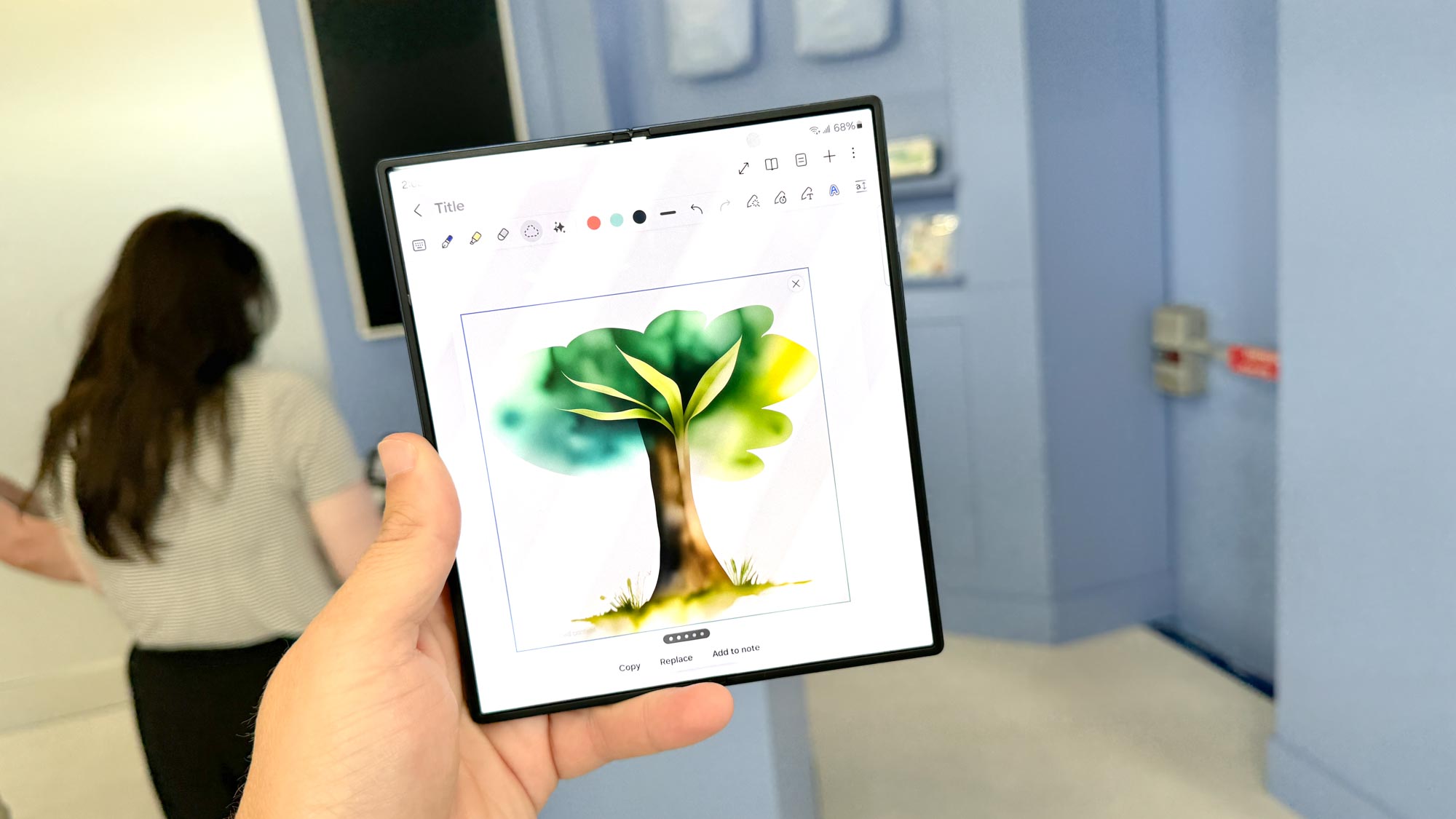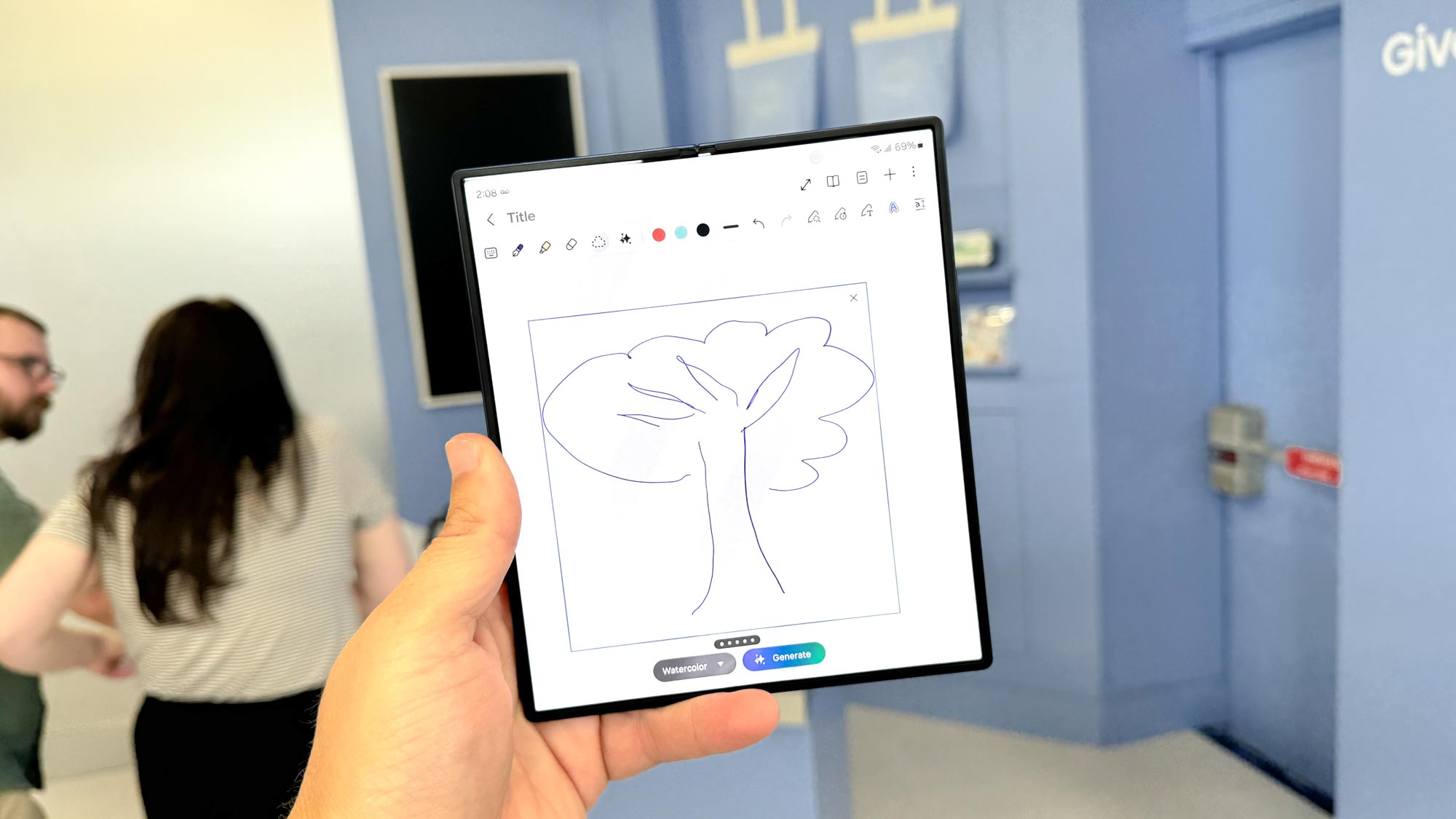Samsung Galaxy Z Fold 6 — 6 reasons to buy and 3 reasons to skip
Here are the pros and cons to getting the latest Galaxy Z Fold

Update: Our full Galaxy Z Fold 6 review is live with our rating and test results.
Facing a more competitive market for foldable phones than ever before, Samsung has responded with the Galaxy Z Fold 6 — a thinner, more durable device that's also more expensive than its predecessor. It's an interesting approach to the stepped-up competition to say the least.
We're still in the process of evaluating the new phone for our full review, but we do have some first impressions in our Galaxy Fold 6 hands-on. We've found plenty to like about Samsung's latest book-style foldable — and also a few things that disappoint us.
Does the good outweigh the bad? Well, that's for our Galaxy Z Fold 6 review to decide. But if you're considering whether to get the phone whether as an upgrade to your current Fold or your first foldable smartphone purchase, we can share some insight on where the Fold shines and where it stumbles. With Galaxy Z Fold 6 preorders now available ahead of the phone's July 24 release, here's a look at reasons to buy and skip this new Samsung foldable.
Reasons to buy the Galaxy Z Fold 6
It's thinner and lighter than ever

Samsung has tweaked the design of the Galaxy Z Fold 6 to make it easier to tote around than its predecessor. When folded, the new phone is 0.05 inches thinner than the Galaxy Z Fold 5, and while that may not sound like much, you can feel the difference tucking the Z Fold 6 into a pocket. The phone has a slimmer profile when unfolded, too, though it's a more subtle difference.
Samsung's slimmed down approach also applies to the phone's weight. The Galaxy Z Fold 6 tips the scales at 8.4 ounces, which is half an ounce lighter than the Z Fold 5. You're still not going to confuse this foldable with a more conventional-looking phone, but the Galaxy Z Fold 6 is definitely more portable than any of its predecessors.
A more durable foldable

In addition to slimming down, the Galaxy Z Fold 6 also toughens up. No, you don't get the titanium frame that Samsung used on the Galaxy S24 Ultra, but the Z Fold 6 does boast more durable glass layers than previous models.
A dual rail hinge combined with a reinforced folding edge helps distribute the shock of external impacts better than before, and the Samsung also coats the phone with Corning's Gorilla Glass Victus 2. And the Galaxy Z Fold 6 now lists water and dust resistance ratings for greater durability.
A brighter display

When it comes to displays, much of the attention will fall on the slightly larger 6.3-inch cover display, which has a wider aspect ratio than before. That should make the Galaxy Z Fold 6 easier to use without having to open the phone — one of the ways Samsung's foldable didn't compare favorably to rival devices such as the OnePlus Open and Google Pixel Fold. We'll have to test that outer display to see how big an improvement is, but the change is certainly welcome news.
Still, to our eyes, the biggest display development with the Galaxy Z Fold 6 involves its 7.6-inch inner display. Samsung says that screen is now rated for a maximum brightness of 2,600 nits. Our tests registered a reading of 2,317 nits on a light meter — definitely brighter than the 1,535=nit reading we got with the Galaxy z Fold 5.
Phone makers are turning to brighter panels for their devices, and it's good to see the Galaxy Z Fold 6 jump on that trend. Because of the brighter display, any time you unfold this device, you should have no problem making out details on the screen no matter what lighting conditions you find yourself in.
Snapdragon 8 Gen 3 power

Upgrading the system-on-chip that powers a phone is one of those improvement you expect to see from one year to the next. Still, don't underestimate how big an upgrade the Snapdragon 8 Gen 3 silicon inside the Galaxy Z Fold 6 could prove to be.
This is Qualcomm's top-of-the-line chipset, and it powers many of the best Android phones. Even better, the Snapdragon 8 Gen 3 outperforms Apple's top silicon in some benchmarks, especially graphics test. The Snapdragon 8 Gen 3 also excels at power management features, so we'll see some improvement in Galaxy Z Fold 6 battery life, even if battery size is unchanged from the 4,400 mAh power pack in the Galaxy Z Fold 5. (Unfortunately, the Galaxy Z Fold 6's time on the battery test still doesn't catch the impressive 11.5 hours the OnePlus Open posted.)
Earlier this year, the Galaxy S24 and Galaxy S24 Plus used either a Snapdragon 8 Gen 3 or Exynos 2400 chipset depending where in the world they were released. Galaxy Z Fold 6 shoppers don't have to worry about that — buy this foldable and you're getting the best Android silicon out there.
Great Galaxy AI features

AI features have been a particular focus for Samsung this year, so you'd expect the Galaxy Z Fold 6 to see its share of Galaxy AI capabilities. But you may be surprised at how well some of those features take advantage of the Fold's unique design.
Google Gemini is a simple swipe away, even on the cover display, ready to answer any questions that you might have. A Note Assist feature provides translation, summary and auto-formatting features, adding a transcription feature that turns voice recordings into text. And the Interpreter Mode that translates conversations real time really benefits from the Galaxy Z Fold 6's form factor, as both interior and exterior displays can show transcripts of the conversation in different languages.
A particularly eye-catching Galaxy AI feature is Sketch to Image in which you can use the optional S Pen to draw sketches in Samsung's built-in Notes app; generative AI then turns that sketch into a watercolor, illustration or cartoon, sprucing up the look of your drawing in your process.
Extended support
The Galaxy Z Fold 6 may cost a lot — more on that very shortly — but Samsung at least wants you to get the most out of your investment. Like the Galaxy S24 lineup, Samsung's latest foldables can count on seven years of software support and security updates, which should help you hang on to the Galaxy Z Fold 6 for a very long time.
Reasons to skip the Galaxy Z Fold 6
The price has gone up
I told you we'd get to the Galaxy Z Fold 6's price. The new foldable starts at $1,899, which is $100 more than the starting price for last year's Galaxy Z Fold 5. It's the msot Samsung has charged for this particular foldable since the original Galaxy Z Fold.
It's true that pre-order deals can bring that price down. At Samsung, you can save up to $1,200 on the phone with an eligible trade-in and get your storage upgraded at no cost. Throw in a year of Samsung Care Plus, and the savings approach the $1,500 mark.
Galaxy Z Fold 6 preorder: up to $1,500 off w/ trade-in @ Samsung
Free storage upgrade! Samsung is knocking up to $1,500 off Galaxy Z Fold 6 preorders when you trade-in an older phone. Additionally, you'll get a free storage upgrade with your preorder. The phone features a 7.6-inch OLED (2160 x 1856) 120Hz main display, 6.3-inch OLED (2376 x 968) 120Hz cover display, Snapdragon 8 Gen 3 CPU, 12GB of RAM, and 256GB of storage. On the rear you get a 50MP f/1.8 main wide-angle lens, 12MP f/2.2 ultra-wide lens, and 10MP f/2.4 telephoto lens. Selfie cams include a 10MP f/2.2 outer lens and 4MP f/1.8 inner lens. In our initial review, we called it an impressive foldable with new AI powers wrapped in a lighter and more durable design.
As generous as that offer is, we'd like to see prices trend downward not upward. If foldables are ever going to become more widely used, it's going to take a price drop to convince more people to give these phones a try. And that's something the Galaxy Z Fold 6 simply doesn't provide.
No big camera improvements

We should note that the ultrawide camera on the Galaxy Z Fold 6 uses a new sensor that supposedly performs better in low-light settings. That's good news, even if the megapixel rating remains the same 12MP that the Galaxy Z Fold 5 offered.
In fact, apart from that change in ultrawide sensors, the camera setup on the Galaxy Z Fold 6 is unchanged from its predecessor. You get a 50MP main camera, 10MP telephoto lens with 3x optical zoom and that 12MP ultrawide shooter. Selife cams include a 10MP front camera on the cover display and a 4MP camera underneath the interior screen — again, matching what the Galaxy Z Fold 5 brought to the table.
Those are essentially Galaxy S24 camera specs for a price tag that's $600 higher than what you'd pay for the far superior cameras on the Galaxy S24 Ultra. The Galaxy Z Fold 6 may be one of Samsung's most premium phones, but you wouldn't know that from the way it treats the device's cameras.
The S Pen remains an afterthought

The Galaxy Z Fold 6 is one of two devices in Samsung's current lineup that works with an S Pen. Yet, the Galaxy S24 Ultra remains the only device that actually ships with the stylus. For the Galaxy Z Fold 6, the S Pen is an optional accessory that adds another $55 to your purchase. You'll also need to add a case with a slot to stash that stylus since there's no built-in holder on the Galaxy Z Fold itself.
That's a trade=off Samsung is likely making to make the device thin and light, as we praised it for earlier. But with Galaxy AI features that now directly tap into the S Pen, it seems counter-intuitive to treat this accessory as an add-on when it comes time to sell people on the Fold.
Galaxy Z Fold 6 outlook
Stay tuned for our full review of the Galaxy Z Fold 6. But based on what we've seen so far rom the phone, the Galaxy Z Fold 6 is a good upgrade if you're currently using a foldable that's a few years old, and you can stomach the higher cost. If cameras are important to you or you find the Galaxy Z Fold 6's price tag too astronomical, you'll want to consider alternate devices, even if their screens can't fold in two.
More from Tom's Guide
Sign up to get the BEST of Tom's Guide direct to your inbox.
Get instant access to breaking news, the hottest reviews, great deals and helpful tips.
Philip Michaels is a Managing Editor at Tom's Guide. He's been covering personal technology since 1999 and was in the building when Steve Jobs showed off the iPhone for the first time. He's been evaluating smartphones since that first iPhone debuted in 2007, and he's been following phone carriers and smartphone plans since 2015. He has strong opinions about Apple, the Oakland Athletics, old movies and proper butchery techniques. Follow him at @PhilipMichaels.



